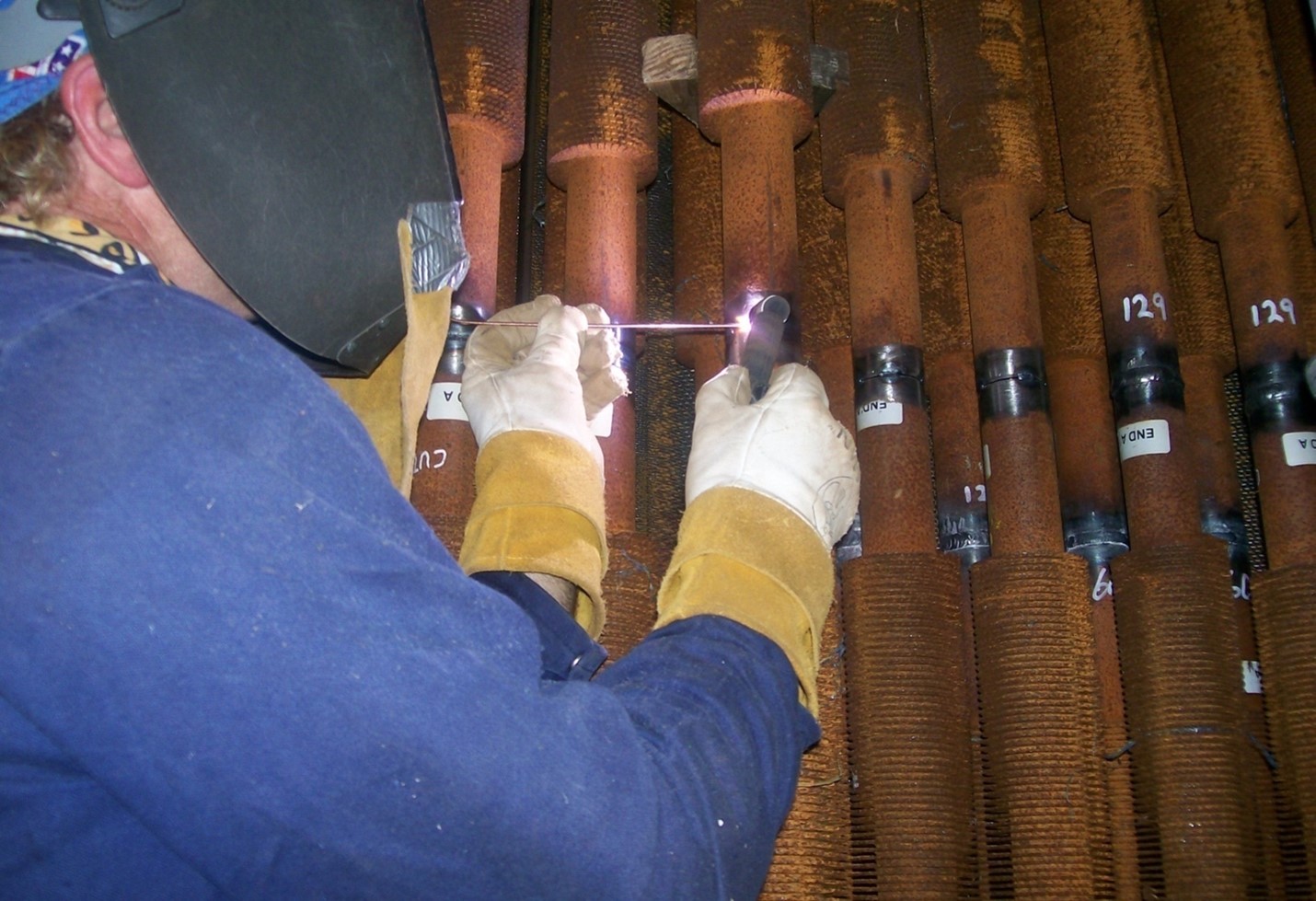
Sponsored content from Bremco, an SVI Industrial company.
The complex steam/water circuitry of heat-recovery steam generators, especially that in the multi-pressure HRSGs typically used in large-power applications, often requires special considerations when scheduling and performing maintenance and repairs. Many combined cycles go through multiple load changes daily—including on/off operation—which put intense thermal, mechanical, and water-chemistry stresses on components, thereby aggravating potential failure mechanisms.
Apart from the tightly packed tube bundles, inspection and evaluation of other components, such as ducts and valves, may be more straightforward. Important is to have a well-designed plan for normal, major, and preventive HRSG inspections and maintenance. Here SVI Industrial’s highly experienced experts examine critical items in this regard.
“Normal” inspection, maintenance. Visual inspection and sometimes accelerated repair of select HRSG equipment items are possible during an outage. These include:
- Inlet and outlet duct liners.
- Dampers.
- Duct burners (for HRSGs so equipped).
- Valves.
- Outer evaporator and superheater tubes.
- Evaporator drums.
Also, some normal and preventive evaluation is possible with the unit in service. Example: Erratic operation of valves and dampers may become evident from sudden, suspicious changes in flow, pressure, and temperature data. Experienced operators often can detect a boiler tube failure by a change in sound, where follow-up acoustic monitoring may pinpoint the location. Diligent tracking of makeup water consumption can indicate a boiler tube leak, especially if the usage suddenly increases.
During outages, visual inspections of burners, ducts, and dampers will reveal damage that supports planning for later repairs or on an emergency basis if necessary. Drum inspections are very important to examine internals—including steam separators—to ensure all components are structurally sound and in proper alignment.
The presence of deposits and the coloration of drum internal surfaces can indicate either good or inadequate chemistry control. Borescope inspections of selected riser tubes may show iron oxide or other deposits, which suggests chemistry or water-treatment problems. With that latter thought in mind, important whenever possible during all visual inspections, is photography. Photos are very valuable for monitoring potential issues over time and for preparing reports discussing needed corrective actions.
Major maintenance. Any number of factors can lead to a major maintenance issue. These may include anticipated events—for example, catalyst degradation over time—to sudden boiler tube failures from perhaps a water-chemistry upset, metallurgical problem, or fatigue issue. Some of the most common major maintenance items include the following:
- Boiler tube repair or replacement.
- Harp or panel replacement.
- Catalyst replacement.
- Duct-burner repair or replacement.
- Main-steam stop valve replacement.
On rare occasions, replacement of a failed boiler tube might not be severely compromising if the failure occurs in an outer tube with easy access. However, from a statistical standpoint, failures most often occur in tubes buried within a harp or bundle. Such locations are very difficult to reach without extracting other tubes.
Potential tube failures emphasize the importance of operating the HRSG within proper ramp-rate guidelines, and in maintaining recommended chemistry at all times, acknowledging that unit cycling can make these tasks difficult at times. CCJ has reported on HRSG chemistry for many years, so this information is readily available in the publication’s archives as well as from other sources—such as the Electric Power Research Institute (EPRI) and the International Association for the Properties of Water and Steam (IAPWS).
A full-harp replacement represents a major maintenance task that is costly, requires a precisely engineered component and field welding according to the ASME Boiler and Pressure Vessel Code. A critical point to remember: Often, upset conditions which caused an initial tube failure, have also damaged other tubes, making harp replacement the most practical option.
Catalyst replacement is a major maintenance issue, too, but if catalyst degradation is simply attributed to normal operation, then planning for catalyst change-out should be straightforward. By contrast, steam-stop-valve replacement represents a major undertaking that requires careful planning. Replacement of large pressure components is not easy.
FAC. Many HRSGs worldwide continue to be plagued by the phenomenon of single-phase flow-accelerated corrosion (FAC). In large part, this is due to the difficult-to-extinguish mindset of the need for reducing-agent/oxygen-scavenger feed to the condensate. FAC-induced failures in feedwater systems and economizers are said by some experts to have caused several fatalities in the power industry over the last three-plus decades.
For steam generators served by feedwater systems containing no copper alloys (which includes virtually all of today’s HRSGs), reducing agents should not be used; an oxidizing water-treatment program—such as all-volatile treatment oxidizing (AVT(O)—is correct.
HRSG chemistry guidelines are covered in many documents available to you at no cost, but a key point regarding this discussion is that for HRSGs still on reducing-agent feedwater treatment, or that were on it in the past, nondestructive evaluation (NDE) of FAC-susceptible locations is critical.
These include the tight-radius elbows in economizers and evaporators, and other locations downstream of flow disturbances in the feedwater and low-/intermediate evaporator networks. Another issue is the phenomenon of two-phase FAC, which commonly occurs in deaerators and HRSG low-pressure drums. Visual inspections often can confirm this corrosion.
 Wrap up. The importance of regular HRSG inspections and corrective maintenance cannot be overemphasized. Neglect of these tasks can lead to failures that cause unit outages and cost a company many tens of thousands of dollars for repairs and purchased power. More importantly, some potential failures jeopardize employee safety. That is the ultimate cost.
Wrap up. The importance of regular HRSG inspections and corrective maintenance cannot be overemphasized. Neglect of these tasks can lead to failures that cause unit outages and cost a company many tens of thousands of dollars for repairs and purchased power. More importantly, some potential failures jeopardize employee safety. That is the ultimate cost.

